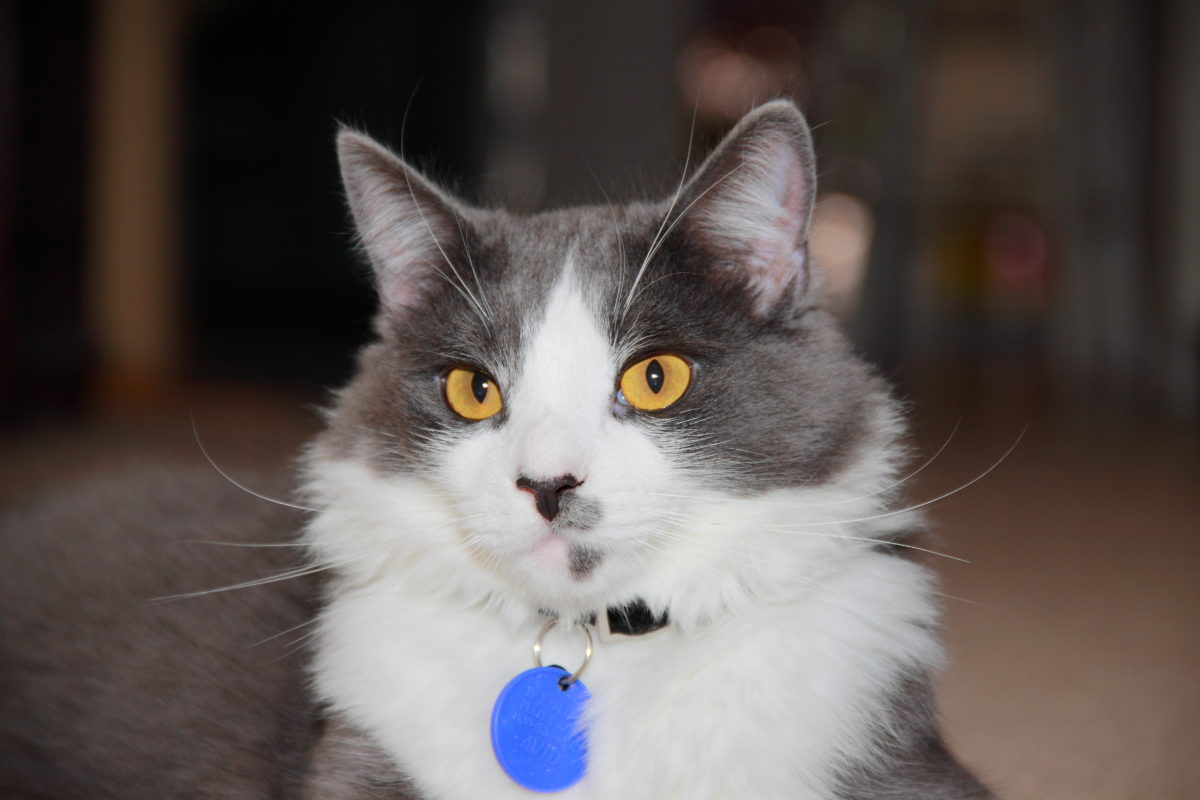Cats are enigmatic and mysterious, but DNA testing kits are helping us to learn more about them. Here’s what you can find out about your fine feline, from ancestry to health.
Interestingly, no DNA kits can precisely identify a cat’s genetic makeup in the same way the dog DNA tests can. That’s because dog breeds have been around a lot longer than cat breeds. Many cat breeds only really began to be developed in the last 60 years.
Physical Features Dominate
“The cat fancy concentrates on breeding for looks,” says Angela Hughes with Wisdom Health, which produces some of the many pet DNA tests on the market. “Their focus is looking for physical features, and often they breed for one particular trait on the background of another breed. For example, an Exotic is a Persian with short hair, a Himalayan is a Persian with points, and a Selkirk Rex is a Persian with curly hair. As renowned geneticist Leslie Lyons is quoted as saying, ‘Same chassis, different paint job.’”
For cat breeders, though, genetic tests such as the Optimal Selection Feline Genetic Breeding Analysis DNA can help them identify approximately 40 diseases and 25 traits in known cat breeds. These types of tests are intended to help breeders make the best possible breeding combinations, avoiding diseases and maximizing genetic diversity within the feline population.
What Tests Can Tell
My cat Ziggy’s cheek swab correctly revealed that he has long hair, detailed his blood type, and advised that he was clear of known diseases that occur in random-bred domestic cats.
“His Genome Wide Diversity chart showed him to be on the lower end of the curve for genetic diversity for what we typically see in random bred cats,” Hughes says. “In fact, he is even less diverse than the average pedigreed cat. This probably means that he was the product of a small group of cats that were interbreeding.”
Ancestry Categories
The test offered by a company called Basepaws divides the cat population into three categories. Western breeds include the American Shorthair, Persian, Siberian, British Shorthair, Maine Coon, Russian Blue, Norwegian Forest Cat, Abyssinian, Exotic Shorthair, Turkish Angora, and Ragdoll. Eastern breeds cover the Oriental Shorthair, Burmese, Birman, and Siamese. Hybrid cats are the result of matings between a domestic cat and a wild cat such as the Bengal (Asian leopard cat crossed with domestic cats) and the Savannah breeds (serval crossed with domestic cats).
According to chief veterinary officer for Basepaws Chris Menges, 95 percent of cats in the world are mixed-breeds, also known as polycats.
“Unlike other dog or human ancestry tests, we cannot make the assumption that your cat was descended from a mixture of purebred lines since purebred cats are so new,” Menges says. “However, using a large panel of purebred cats that we have sequenced, we can try to find parts of your cat’s genome that are similar to a known cat breed. As we gather more purebred data and trait information, we will be able to start narrowing down the parts of the genome that are responsible for certain traits and thus will continue to explore what makes your polycat unique.”
Ziggy was assigned to the Western breed group based on comparative genomic similarity to breeds belonging to the Western group. Within that group, he was found to be more similar to the Russian Blue than 94.84 percent of all other cats in the Basepaws database. While these tests don’t reveal temperament/personality traits, they come with descriptions of temperament/personality and appearance based on what is known about particular cat breeds.
The report described Russian Blues as the “Doberman Pinscher” of cats, noting that they combine elegance and masculinity in their own unique way. It went on to say that Russian Blues are strong and agile, with a sweet nature. (That’s our Ziggy!) The breed is known for a grayish-blue coat, broad head, and vivid green eyes. Short, plush fur has silver-tipped hairs, giving the coat a slight shimmering appearance. The report went on to detail Russian Blue breed origins, genetic predispositions, and temperament/personality.
Then the fun part: the report also lists cats in their similarity to big cats. They ranked Ziggy closest to a cheetah.
Menges explains. “The Wildcat Index is just a fun comparison between your cat’s DNA and DNA found in the iconic big cats. While we know they aren’t related by recent direct descendants, it is similar to when humans compare handprints to those of other primates. An interesting look at just how similar our cats are to some of their distant cousins!”
This article was reviewed/edited by board-certified veterinary behaviorist Dr. Kenneth Martin and/or veterinary technician specialist in behavior Debbie Martin, LVT.








